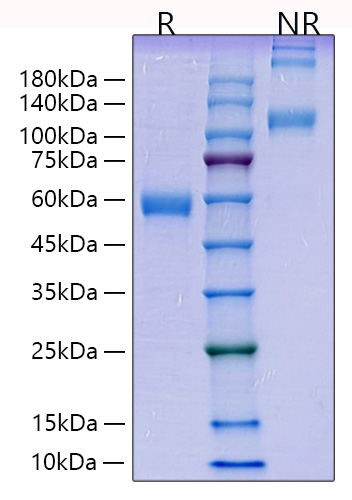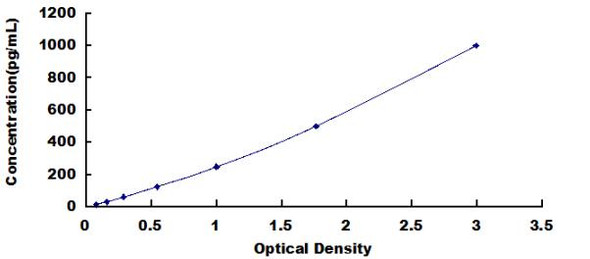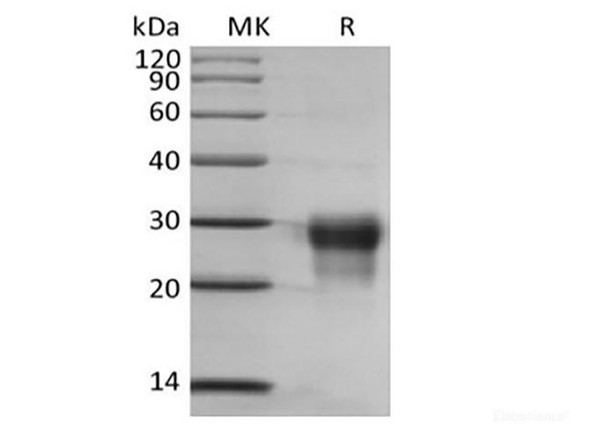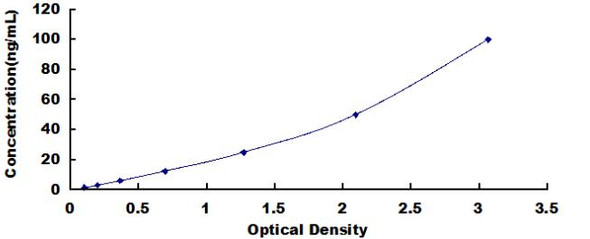Description
| Product Name: | Recombinant Human Placenta growth factor/PlGF-131/PlGF-1 Protein |
| SKU: | RPCB2188 |
| Size: | 10µg |
| Tag: | C-hFc |
| Reactivity: | Human |
| Expression Host: | HEK293 cells |
| Protein Description: | High quality, high purity and low endotoxin recombinant Recombinant Human Placenta growth factor/PlGF-131/PlGF-1 Protein , tested reactivity in HEK293 cells and has been validated in SDS-PAGE.100% guaranteed. |
| Endotoxin: | < 0.1 EU/μg |
| Formulation: | Lyophilized from a 0.22 μm filtered solution of PBS, pH 7.4. |
| Gene ID: | 5228 |
Placenta growth factor (PlGF) is a member of the PDGF/VEGF family of growth factors that share a conserved pattern of eight cysteines (1, 2). Alternative splicing results in at least three human mature PlGF forms containing 131 (PlGF-1), 152 (PlGF-2), and 203 (PlGF-3) amino acids (aa) respectively (1, 2). Only PlGF-2 contains a highly basic heparin-binding 21 aa insert at the C-terminus (1). Human PlGF-1 shares 56%, 55%, 74% and 95% aa identity with the comparable isoform of mouse, rat, canine, and equine PlGF, respectively. PlGF is mainly found as variably glycosylated, secreted, 55-60 kDa disulfide linked homodimers (3). Mammalian cells expressing PlGF include villous trophoblasts, decidual cells, erythroblasts, keratinocytes, and some endothelial cells (1, 4-6). Circulating PlGF increases during pregnancy, reaching a peak in mid-gestation; this increase is attenuated in preeclampsia (7). However, deletion of PlGF in the mouse does not affect development or reproduction. Postnatally, mice lacking PlGF show impaired angiogenesis in response to ischemia (8).
| Storage: | Store at -20℃.Store the lyophilized protein at -20℃ to -80 ℃ up to 1 year from the date of receipt.After reconstitution, the protein solution is stable at -20℃ for 3 months, at 2-8℃ for up to 1 week. |
| Reconstitution: | Centrifuge the vial before opening. Reconstitute to a concentration of 0.1-0.5 mg/mL in sterile distilled water. Avoid vortex or vigorously pipetting the protein. For long term storage, it is recommended to add a carrier protein or stablizer (e.g. 0.1% BSA, 5% HSA, 10% FBS or 5% Trehalose), and aliquot the reconstituted protein solution to minimize free-thaw cycles. |
| Swiss-Prot: | P49763-2 |







